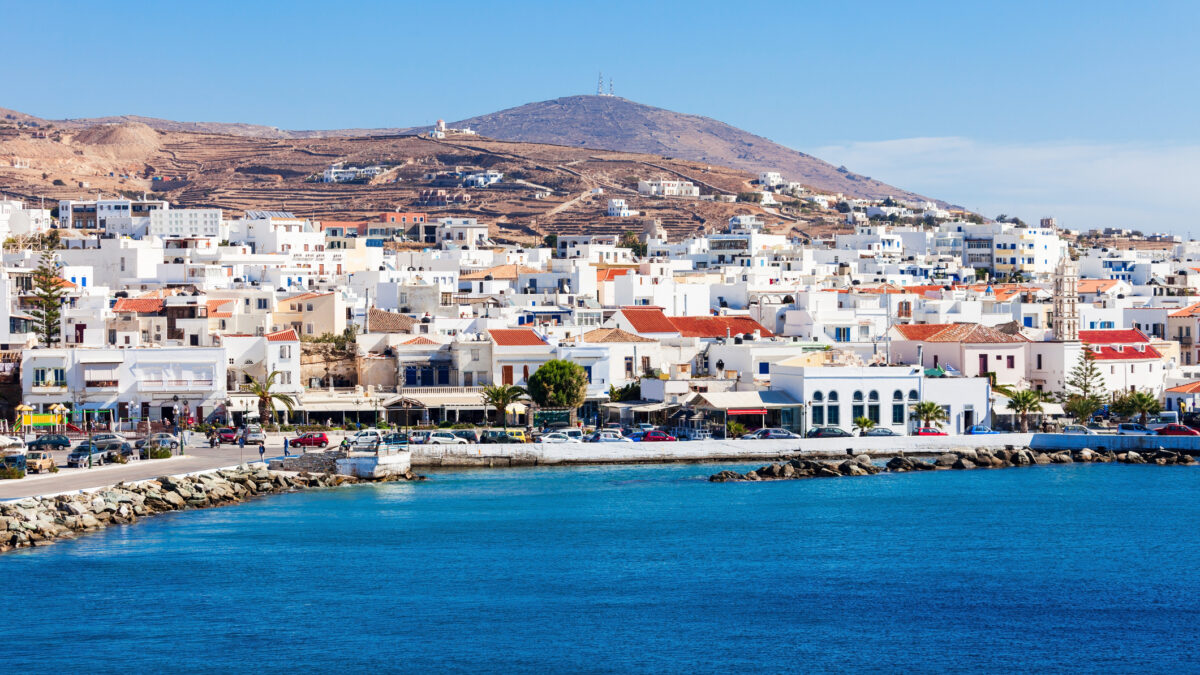Tinos was named after the mythical prehistoric founder of the first settlement here, Tinos. Historically, it was also known by the names ‘Ydrousa’, ‘Skordoforos’, and ‘Ofioussa’, while through to the present day it is known as the ‘island of Aeolus’ due to the strong winds that buffet it. Tinos is steeped in history and played a vital role during the period of Ottoman rule, being the final island to surrender to the Turks.
Thanks to hosting the church of Our Lady of Tinos in the main settlement of Chora, Tinos has become widely known as ‘island of She of Great Grace’. The church houses what is – according to Christian tradition – a miraculous icon that has made the island a major pilgrimage destination. Recently though, thanks to the arts, Tinos has attained more widespread popularity among tourists. The island is the birthplace of internationally recognised artists, such as Giannoulis Chalepas, Georgios Vitalis and Nikiforos Lytras, while its marble craftsmanship has been included in UNESCO’s list of intangible cultural heritage of humanity. The village of Pyrgos is home to the Ministry of Culture’s School of Fine Arts as well as the Museum of Marble Crafts.
Tinos is renowned for its more than 45 villages, each of which has something unique to show. Verdant Kardiani, Pyrgos – the main village and living museum – Ysternia presiding over the Aegean, Volax with its famous granite boulders, the picturesque Dyo Choria, the fishing village of Panormos, the ‘alpine’ Arnados and the labyrinthine Falatado are just a few of the villages waiting to be explored.
The island also has no shortage of beaches: easily accessible or rugged, with or without beach bars, exposed to the meltemi and the north winds, sandy or strewn with pebbles. There are options here to satisfy just about every visitor: the famous Kolymbithra beach is a surfer’s paradise; at rugged Livada, don’t be surprised to see goats climbing the impressive local cliffs; Kiona is a family-friendly destination; Pachia Ammos is ideal for leisure; Agios Fokas is protected from the winds; and finally, Apigania is also worth a visit.
Cuisine
Tinos is renowned for its locally grown artichokes, exceptional garlic (it is no coincidence that Aristophanes calls the island ‘skordoforos’, garlic-bearing), herbs (thyme, oregano, chamomile, etc.), prickly pears (in addition to various other types of figs), capers, and sun-dried tomatoes. The latter two are rarely absent from meals and form the basis for a plethora of local recipes. Also produced here are honey and raki.
But the island also has an extensive array of cheeses and cured meats for visitors to sample. The island’s extensive livestock breeding and cheese-making traditions are evidenced in cheeses such as Tinian tyraki, petroma (an unsalted cheese that is used as the basis for most of the island’s cheeses), stroggylo, kariki (a strikingly flavourful blue cheese that matures in bottle gourds), graviera and (mild) kopanisti – from local cows – anthotyro and malathouni. Tinos also produces a wide and fascinating variety of cured meats, such as louza, hams (cured in red wine), sausages and ‘saltsitsi’, a local salami with a prominent garlic flavour.
Tinos is known for its tsimbita; these sweets, beyond their impressive appearance, are made of phyllo and local cheese (petroma) flavoured with cinnamon, orange and mastic. Also worth tasting are the island’s almond sweets, psarakia (a fish-shaped Lenten sweet filled with grated almonds, orange zest, toasted bread and spices, and dusted with powdered sugar), xerotigana and loukoumia.
How to get there
Tinos is an island in the northern Cyclades. It is serviced by ferry from the ports of Piraeus and Rafina.










